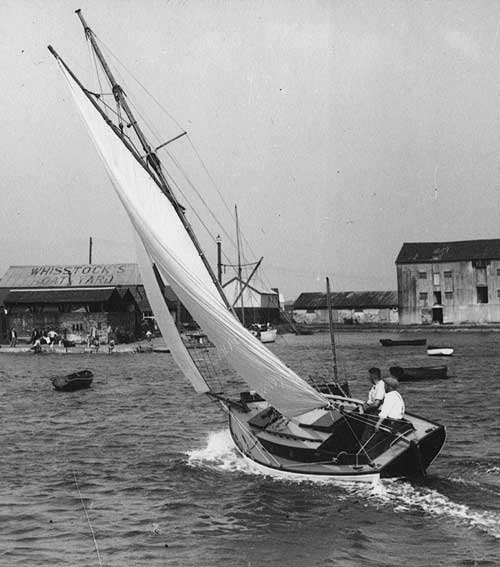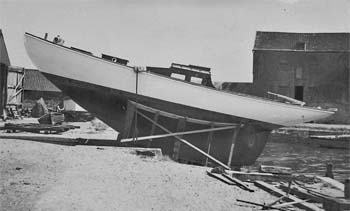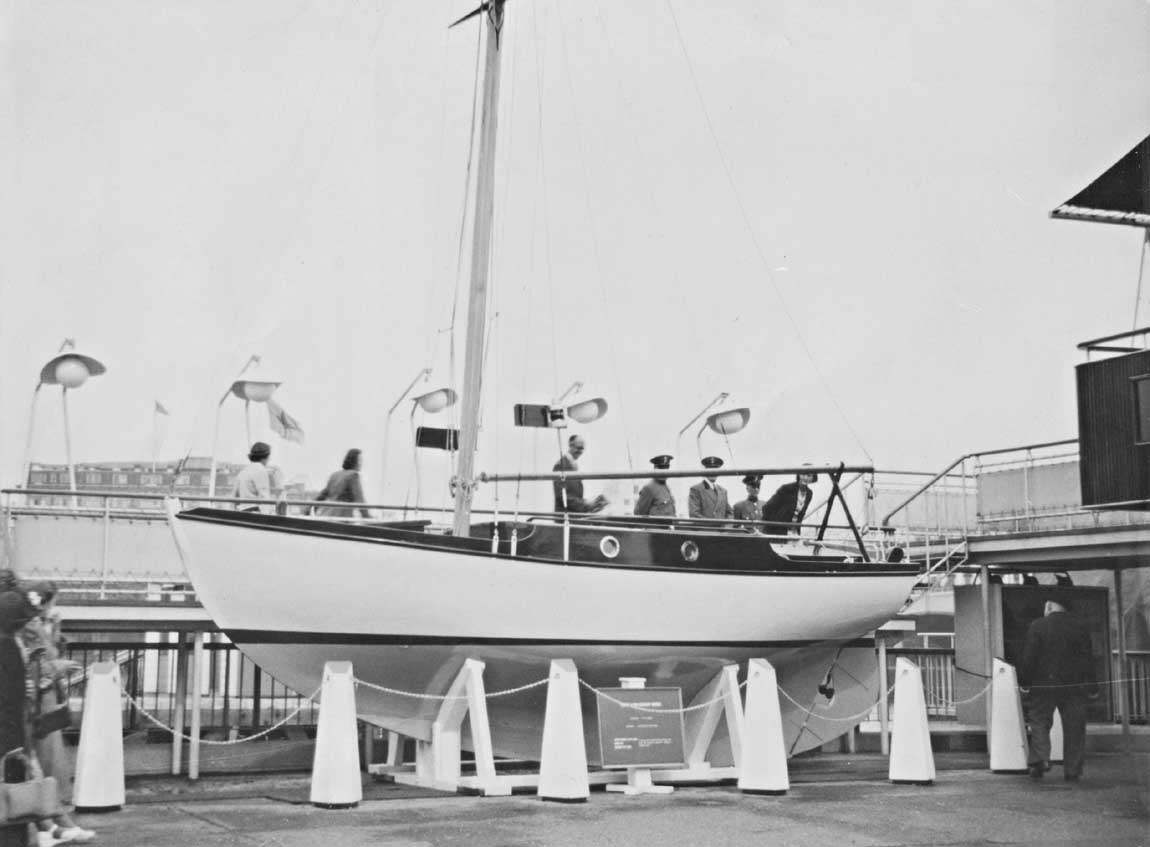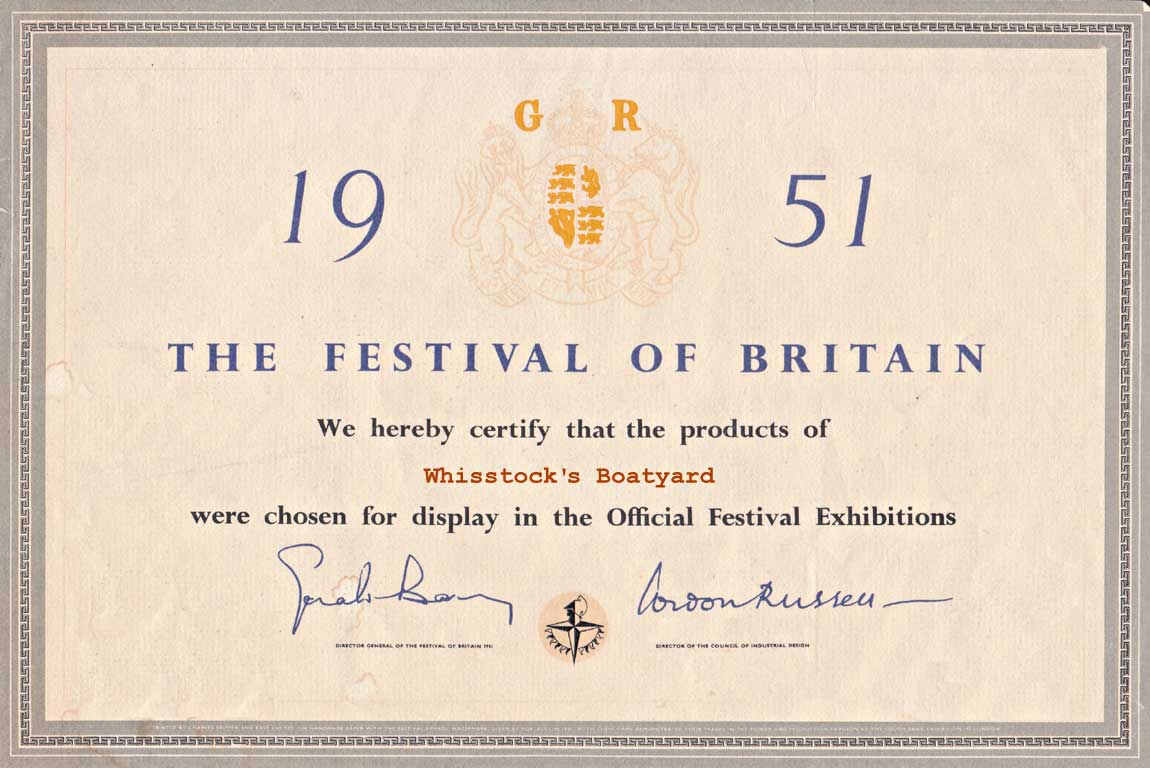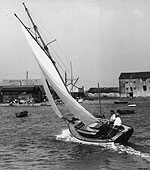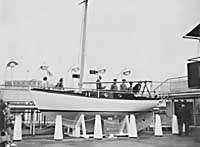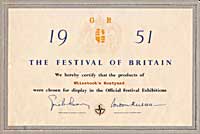| Specification | ||
|---|---|---|
| LOA (deck) | 6.705m | 22'0" |
| LWL | 5.791m | 19'0" |
| Beam | 2.134m | 7'0" |
| Draught | 1.067m | 3'6" |
| Headroom | 1.448 m | 4' 9" |
| Displacement | 3005kg | 6625lbs |
| Ballast | 914kg | 2016lbs |
| Trimmimg Ballast | 305kg | 672lbs |
| TM* | 4 tons | |
| Mainsail | 19.510m2 | 210.00ft2 |
| Jib | 6.968m2 | 75.00ft2 |
| Engine | 2.983 kw | 4.00 bhp |
Design No. 000 – Deben 4-ton 6.705m (22'0") sloop
In 1936, my father, Claude Whisstock, commissioned W. M. Blake to design the Deben 4-tonner for a customer. Subsequently, at least 35 of these robust little sail boats were built by the yard from 1937 through to 1960 (though my father always insisted that there weremore than 40of them).
Later, in 1948/1949, my father designed the Deben 6-tonner, essentially as a larger version of the 4-tonner for more extensive cruising and with rather more accommodation.
Most "Debens" are still sailing today giving their owners the same pleasure as they did their original owners more than half a century ago. Some have been lovingly restored and I am regularly in touch with many of their current owners.
A list of Deben 4-Tonners is available here
A scan of a boatyard brochure (c. 1948) for the Deben 4-Tonner is available here (loads in a new window). The original is in a poor state so the scans are not especially good.
A scan of a slightly later brochure (c. 1950) for the Deben 4-Tonner and 6-Tonner is available here (loads in a new window).
Here's a quote from the 1951 brochure which I think sums up these great little boats:
September 1948. Gosport. The passage was completed in 72 sailing hours, first port of call Calais, then Folkestone and Gosport. We had about 12 hours of good weather, the rest violent to fair, but the boat behaved excellently, even when hove to off the Kentish Knock and in some really heavy seas off the French coast. I am very pleased with the way she behaved at sea.
Note: The Kentish Knock is a shoal in the North Sea, east of the Thames Estuary in southeast England, with a great number of wrecks. The Kentish Knock was a Light Vessel marking the shoal. The Battle of the Kentish Knock was a naval battle between the fleets of the Dutch Republic and England, fought on 28 September 1652.
Deben Honour was chosen to be exhibited at the Festival of Britain 1951 as an example of the best of British boatbuilding – indeed an honour. The boat is pictured here at the festival, together with a scan of the original certificate.
Our original tracings of the Deben 4-Tonner are so fragile that printing from them would be very difficult. In order that the design details can be perpetuated, we have transcribed the original Table of Offsets into our design program, and faired the lines to fit the offsets as closely as possible.
This is basically the same process that would have been carried out full size on the loft floor at Whisstocks in 1936. The laying-off loft was still standing through to 2016 – you can see it in the picture of Cyrelia at the top of this page: it is in the centre of the picture through Cyrelia's rigging (with the white-painted gable end) above the Timber Shed . Now (2020) the whole boatyard site has, sadly, been redeveloped for expensive (and very ugly) waterside apartments.
We have now recreated all five original drawings and these are available to as a free download. They are:
Offsets (1936)
Lines (1936)
Construction Plan (1936)
Sail Plan, Gaff Rig (1936)
Sail Plan, Bermudian Rig (1937)
The Offsets are set out a little differently from a modern Table of Offsets. We have provided some explanatory notes and a brief description of the Laying-off, or Lofting, process here.
To access the Deben 4-tonner plans you just need to register, and the Deben 4-Tonner plans, together with other free designs, will appear in your design portfolio. You don't need to make any purchase.
Existing members will be able to see and download these recreated plans from their design portfolio.

